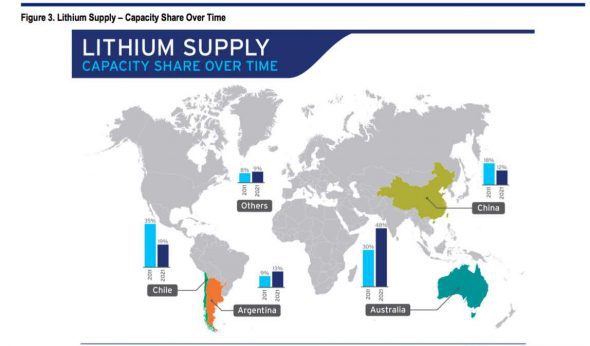The Clean Energy Finance Corporation has made its first investment at the start of the supply chain for the clean energy economy with a $20 million contribution to a new lithium-tantalum mining project in Western Australia.
The $US15 million investment is being made as part of a $US100 million secured bond issued by an offshoot of Pilbara Minerals, an ASX-listed company that hopes to extract lithium and supply the market for lithium-ion battery storage products for electricity and electric vehicles.
CEFC chief executive Ian Learmonth says the investment is the first of the kind for the CEFC, and is an example of how the CEFC can support the development of a strong supply chain to further enable Australia’s – and the world’s – transition to a low carbon economy.
“Lithium is an essential part of the clean energy transition, particularly as we develop enhanced battery storage technologies that will allow us to increase the use of renewable energy, both for large- scale and small-scale projects,” he said in a statement.
“The lithium concentrate supplies to be produced by this project will help build Australia’s capacity to supply much needed resources for the clean energy technologies that are set to play a vital role in increasing the use of renewables in our future energy mix.”
The Pilgangoora lithium-tantalum project is located about 120km south of Port Hedland in WA’s Pilbara region and has already begun construction. Analysts at Citi say it should be a good money spinner for the company with healthy margins of 52 per cent.
It comes as at least two different consortia advance plans for battery storage manufacturing “gigafactories” in Australia, including one in Townsville led by the Boston Energy Group and another smaller one in Darwin led by Energy Renaissance, backed by UGL.
Much of the current lithium supply is extracted from salt pans in southern America and elsewhere, but Australia – where it is mostly extracted from hard rock, such as in the Mt Cattlin and Mt Marion mines – is expected to boost its share to nearly one half of global production by 2021, according to the Citi graph above.
The CSIRO, in its recent Low Emissions Technology Roadmap, said Australia has the world’s fourth largest lithium reserves, is well positioned to benefit from growth in the global battery market, which it expected to reach 100GW in the next 20 years.
Pilbara Minerals chief executive Ken Brinsden and the CEFC agree that Australia can play a leading role in the global lithium supply chain, and such projects will ensure a reliable supply for the Australia market.
Brinsden said mine should be commissioned early next year. The company will export the concentrate to China, where two Chinese companies have signed off take agreements to process into lithium carbonate and lithium hydroxide.











